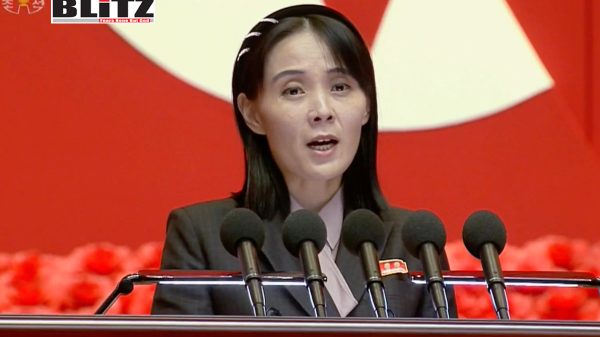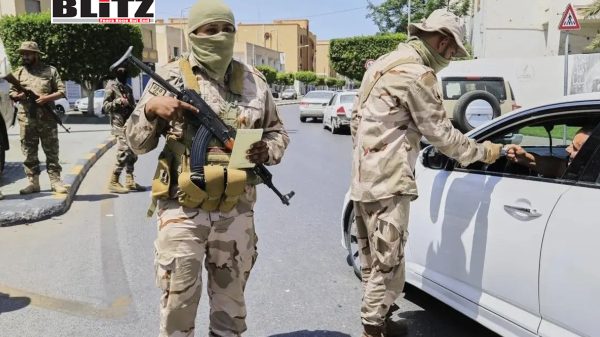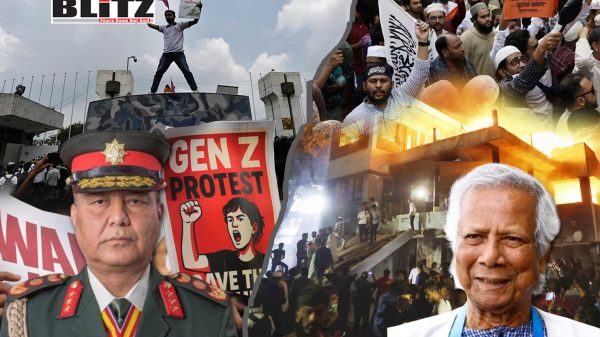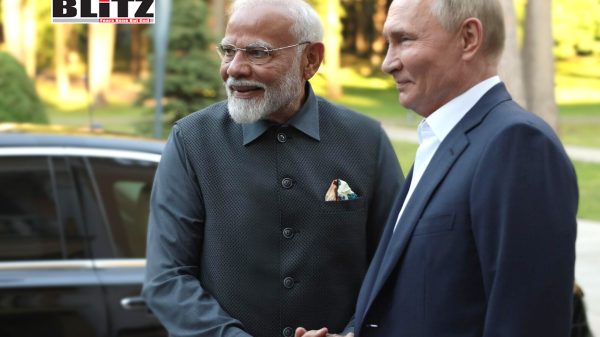North Korea warns of ‘bad results’ as US, South Korea, Japan begin joint military drills
- Update Time : Monday, September 15, 2025

North Korea has issued a sharp warning against upcoming joint military exercises involving the United States, South Korea, and Japan, calling them a reckless provocation that risks igniting further instability on the Korean Peninsula. The warning, delivered through Kim Yo Jong, the powerful sister of North Korean leader Kim Jong Un, underscores the growing tension in the region amid Pyongyang’s deepening military ties with Russia and its hardline stance on nuclear development.
From September 15 to 19, South Korea, the United States, and Japan are set to carry out large-scale joint military drills off South Korea’s Jeju Island. The exercises will integrate naval, air, and missile-defense operations, aiming to bolster collective readiness in the face of what officials describe as “evolving threats” from North Korea.
In addition to the live-action drills, Seoul and Washington plan to conduct a tabletop exercise designed to improve command and control systems and ensure smoother coordination of their combined assets. The Pentagon has long emphasized that these exercises are defensive in nature, but Pyongyang has consistently rejected this explanation.
For decades, North Korea has branded such drills as dress rehearsals for invasion, a position it has used to justify its own military build-up, including missile launches and nuclear tests.
Kim Yo Jong, often considered her brother’s de facto deputy, issued a blistering statement on September 14 through the Korean Central News Agency (KCNA). She condemned the exercises as a “reckless show of strength” carried out in the “wrong place” that would inevitably lead to “bad results.”
Her remarks were framed as a direct threat, intended to remind Washington, Seoul, and Tokyo that Pyongyang retains the capability and willingness to retaliate. “The reckless show of strength made by them in real action in the vicinity of the DPRK … will inevitably bring bad results to themselves,” she warned.
Kim’s intervention is notable not only because of her high-ranking role but also because it signals a coordinated effort by North Korea to project defiance ahead of the drills. Her comments came just days after Kim Jong Un visited a weapons research facility, where he reaffirmed the regime’s dual-track policy of strengthening both nuclear and conventional forces.
Since the collapse of denuclearization talks with the United States in 2019, North Korea has doubled down on its nuclear ambitions. It has declared itself an “irreversible” nuclear state and passed legislation allowing for the preemptive use of nuclear weapons under certain conditions.
International observers believe Pyongyang has accelerated weapons testing and research in response to both the perceived threat from US-led alliances and the geopolitical shifts triggered by Russia’s invasion of Ukraine. The war in Eastern Europe has given Kim Jong Un new opportunities, including deepened military cooperation with Moscow.
North Korea has leveraged its alignment with Russia to shore up its position against Washington and its allies. Reports indicate that Pyongyang has sent thousands of troops and workers to support Moscow’s war effort in Ukraine, securing in return critical diplomatic and technological support.
Last year, Russian President Vladimir Putin visited North Korea, where he signed a mutual defense pact with Kim Jong Un. The agreement commits both nations to support each other militarily in the event of external aggression, effectively tightening a new axis of resistance against Western influence.
For Pyongyang, this alliance not only reduces its international isolation but also provides a shield for its continued weapons development. For Moscow, the partnership offers manpower, ammunition, and ideological solidarity at a time when it faces growing isolation from the West.
The upcoming drills highlight the increasingly precarious security environment in Northeast Asia. The United States maintains roughly 28,500 troops in South Korea, with additional deployments in Japan. Together, Washington, Seoul, and Tokyo have sought to present a united front against North Korea’s growing arsenal of ballistic missiles, some of which are now believed to be capable of carrying nuclear warheads and reaching the continental United States.
At the same time, North Korea’s deepening partnership with Russia complicates the security equation. Moscow’s backing could embolden Pyongyang to take more aggressive military actions, whether through missile launches near allied territory or cyberattacks on critical infrastructure.
China, North Korea’s largest trading partner, has been more cautious. While Beijing continues to call for dialogue and opposes expanded US military presence in the region, it has refrained from publicly endorsing Pyongyang’s threats. Nonetheless, the China-Russia-North Korea alignment is becoming an increasingly important factor in shaping the regional security architecture.
US and South Korean officials have so far brushed off Pyongyang’s latest warnings, reiterating that the drills are defensive in nature and necessary for deterrence. The allies argue that the absence of preparedness could invite greater risk, especially given North Korea’s record of provocations.
South Korea’s Ministry of Defense emphasized that the exercises would strengthen trilateral cooperation with Japan and bolster missile-defense systems capable of intercepting North Korean launches. Meanwhile, the White House reaffirmed Washington’s “ironclad commitment” to defending its allies in the region.
Yet analysts warn that the cycle of military escalation and counter-escalation between North Korea and its adversaries risks creating a self-perpetuating spiral. Each round of drills tends to trigger a response from Pyongyang, often in the form of missile tests, which in turn prompt further allied exercises. With North Korea now openly tied to Russia through a defense pact, the stakes are higher than ever.
Kim Yo Jong’s latest remarks reflect Pyongyang’s strategy of combining military threats with diplomatic defiance. For the regime, demonstrating strength is as much about deterring adversaries as it is about consolidating domestic legitimacy. But for the United States, South Korea, and Japan, the cost of backing down could mean exposing themselves to greater risk from a nuclear-armed adversary.
As the joint drills commence, the Korean Peninsula once again finds itself at the center of geopolitical fault lines, where any miscalculation could have far-reaching consequences-not just for the region, but for global security.









